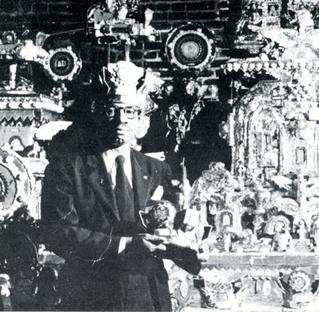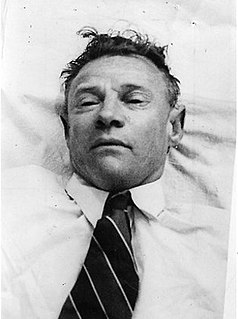 W
WThe Beale ciphers are a set of three ciphertexts, one of which allegedly states the location of a buried treasure of gold, silver and jewels estimated to be worth over US$43 million as of January 2018. Comprising three ciphertexts, the first (unsolved) text describes the location, the second (solved) ciphertext the content of the treasure, and the third (unsolved) lists the names of the treasure's owners and their next of kin.
 W
WThe Dorabella Cipher is an enciphered letter written by composer Edward Elgar to Dora Penny, which was accompanied by another dated July 14, 1897. Penny never deciphered it and its meaning remains unknown.
 W
WJames Hampton was an American outsider artist, originally from South Carolina but based in Washington, D.C. for most of his life. Hampton worked as a janitor and secretly built a large assemblage of religious art from scavenged materials, known as the Throne of the Third Heaven of the Nations' Millennium General Assembly. Often abbreviated to simply the Throne, it is currently on display at the Smithsonian American Art Museum in Washington. Art critic Robert Hughes of Time magazine wrote that the Throne "may well be the finest work of visionary religious art produced by an American."
 W
WKryptos is a sculpture by the American artist Jim Sanborn located on the grounds of the Central Intelligence Agency (CIA) in Langley, Virginia. Since its dedication on November 3, 1990, there has been much speculation about the meaning of the four encrypted messages it bears. Of these four messages, the first three have been solved, while the fourth message remains one of the most famous unsolved codes in the world. The sculpture continues to be of interest to cryptanalysts, both amateur and professional, who are attempting to decipher the fourth passage. The artist has so far given four clues to this passage.
 W
WOlivier Levasseur, was a French pirate, nicknamed La Buse or La Bouche in his early days for the speed and ruthlessness with which he always attacked his enemies as well as his ability to verbally attack his opponents. He is known for allegedly hiding one of the biggest treasures in pirate history, estimated at over £1 billion, and leaving a cryptogram behind with clues to its whereabouts.
 W
WThe Tamám Shud case, also known as the Mystery of the Somerton Man, is an unsolved case of an unidentified man found dead in 1948 on the Somerton Park beach, just south of Adelaide, South Australia, Australia. The case is named after the Persian phrase tamám shud, meaning "is over" or "is finished", which was printed on a scrap of paper found months later in the fob pocket of the man's trousers. The scrap had been torn from the final page of a copy of Rubaiyat of Omar Khayyám, authored by 12th century poet Omar Khayyám. Tamám was misspelt as Tamán in many early reports, and this error has often been repeated, leading to confusion about the name in the media.
 W
WThe Voynich manuscript is an illustrated codex hand-written in an otherwise unknown writing system, referred to as 'Voynichese'. The vellum on which it is written has been carbon-dated to the early 15th century (1404–1438), and stylistic analysis indicates it may have been composed in Italy during the Italian Renaissance. The origins, authorship and purpose of the manuscript are debated. Various hypotheses have been suggested, including that it is an otherwise unrecorded script for a natural language or constructed language; an unread code, cypher, or other form of cryptography; or simply a meaningless hoax.
 W
WThe Zodiac Killer, or simply Zodiac or the Zodiac, is the pseudonym of an unidentified serial killer who operated in Northern California in the late 1960s. The killer originated the name himself in a series of taunting letters and cards that he mailed to regional newspapers, threatening killing sprees and bombings if they were not printed. Some of these letters included cryptograms, or ciphers, in which the killer claimed that he was collecting his victims as slaves for the afterlife.